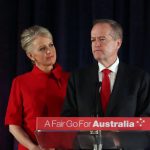Tackling the scandal of forced marriage

The death of 20-year-old Ruqia Haidari in Perth in January this year, allegedly murdered by her husband whom she wed only two months earlier, and the recent arrests of three of her family members, brings forced marriage in Australia into sharp focus.
It’s another tragic loss of a woman, allegedly at the hands of her partner. However, it’s not just Ruqia’s death, but the circumstances of her marriage that also warrants attention.
Her husband has already been charged with her alleged murder, and earlier this month in the regional Victorian town of Shepparton, the Australian Federal Police arrested a further three people from Ruqia’s family.
They’ve been charged over allegedly forcing her to marry her accused killer. It’s only the second time the charge has been used in Victoria. In August 2019, AFP Human Trafficking Team detectives met with Ruqia, who claimed members of her family were threatening and coercing her into participating in a forced marriage.
The AFP said Ruqia was offered protection and assistance to leave her situation on “several occasions”, including police intervention and protection, emergency safety planning, and alternative accommodation via the Support for Trafficked People Program. However, the marriage went ahead in November last year, and Ruqia moved to Perth to live with her husband.
This case raises some important questions about Australia’s response to forced marriage.
Forced marriage in Australia: what we know
The true extent of forced marriage in Australia remains unclear, but what is known is that the AFP received 223 reports related to human trafficking and slavery offences in the 2019-20 financial year. Of these, 92 were for forced marriage.
The most vulnerable victims of forced marriage were females aged 15 to 19.
Of those forced marriage reports, 51% were victims under the age of 18, 70% related to offshore marriage, and the most vulnerable victims of forced marriage were females aged 15 to 19.
In 2019, the Australian Institute of Criminology published a small study on forced marriage, noting that data is difficult to obtain for reasons that include the hesitation of victims to report to police, and the hidden nature of forced marriage, which requires someone in the marriage or situation, or someone close to them, to be able to identify that consent to marry is not present.
How is Australia responding to forced marriage?
In 2013, Australia criminalised forced marriage under section 270.7A of the Commonwealth Criminal Code Act (1995), alongside offences related to trafficking and slavery. This change made it an offence to force anybody into a marriage here and overseas (where there is a connection to Australia). Force is defined as a marriage entered without free and full consent, because of coercion, threat or deception.
Four years later, in 2017, the Royal Commission into Family Violence recommended that forced marriage be recognised as a statutory example of family violence in the Victorian Family Violence Prevention Act (2008) (Vic). This recommendation was put into effect in August 2018, but a challenge with this move has been the consideration of the priority and focus of the Victorian law with the pre-existing Commonwealth law and policy response (Segrave, 2017).
Limitations of the Commonwealth response
The criminalisation of forced marriage spurred a range of government and civil society initiatives, ranging from awareness-raising activities in communities, workshops for young people within schools, and a dedicated website for accessing information and legal advice.
It’s been suggested that these initiatives have assisted in bringing about awareness of forced marriage, and the rights that individuals have – leading to increased numbers of reporting. However, as mentioned earlier, data is scarce. The long-held tradition of reporting numbers as evidence is problematic, as it tells us little about who doesn’t report to police, and the attrition of cases from the support services.
The federal victim support response for victims of trafficking and slavery-like offences has long been tied to the criminal justice process, which has garnered significant critique, and some reform.
The current system provides victim-survivors with access to support – including case management, material assistance and referral for legal advice – for 200 days without having to engage with law enforcement or the criminal justice system, but the catch is the referral must come via the AFP.
If you need longer-term support, beyond the 200 days, you must be willing and able to engage with the criminal justice process. This remains the case despite a 2019 evaluation of the support program that specifically recommended diversifying entry to the program and removing any link to the criminal justice process.
What does this tell us?
The Australian response is tied to investigation and intervention. We know very little about the circumstances of forced marriage, or what people need in the short term or long term.
A key question then arises in the case of Ruqia, someone who actively sought assistance from the AFP, but whose efforts to seek help did not translate into authorities being able to help her: If people disengage or never choose to engage with the criminal justice system, and this is the only pathway to accessing formal support, are we missing a significant opportunity to keep them safe, and to prevent forced marriages?
Alternatives to the criminal justice system: prioritising safety
The arrest of the people tied to Ruqia’s alleged forced marriage may be held up as a demonstration of law in action. However, there’s a need to be critical in considering the effectiveness of intervention, including the circumstances that meant only in her death have arrests been made.

Internationally, forced marriage law and policy is very different. It includes informed and coordinated support from multiple entry points; national policy frameworks where activating legal intervention is opt-in rather than essential to accessing support; and priority lies in providing a suite of options that best meet the needs of individual circumstances.
There’s an opportunity for Victoria to lead in providing an alternative to the current Commonwealth response, because it locates forced marriage within a system and process designed to support women’s safety and security, and recognises that it’s a specialised and specific form of abuse that requires skill and expertise.
Ruqia’s case suggests that the current approach, led by a criminal justice agenda, is both limited and failing to meet the needs of individuals at risk of forced marriage.
Australia has reached a point where cases such as this reveal that perhaps critical questions about the way in which we’re responding need to be asked, and answered. We need to take stock of what we do know, and identify what we don’t. We need to be bold enough and brave enough to challenge the assertion that because we offered somebody what we had available to them, on numerous occasions, that we did “all we could” to keep them safe.
We cannot undermine the agency that women have in assessing their needs, and their risk, and ask the question, who decides? Who decides that what we have available is what people need?
A further investment in mapping the issue from the perspective of victim-survivors, and communities, is critical to Australia paving the way for our shared goal of safety. Without this investment we risk moving further away from what we all agree the objective is – personal and collective safety.
If you or someone you know could be a victim of this crime type, please report it by calling 131 AFP (237).
You can join the conversation online by using the hashtags #EndHumanTrafficking and #HumanTrafficking.
This article was published by Lens.
Laura’s PhD at Monash University explores young women’s experiences of forced marriage in Australia and questions Australia’s current response in meeting their needs. She has more than a decade of experience working with victim-survivors and engaging in policy advocacy on gender violence within culturally and linguistically diverse communities.










